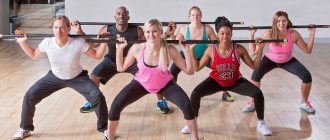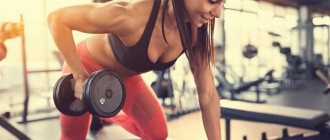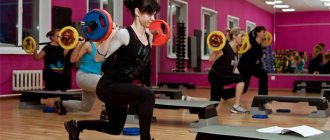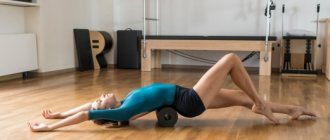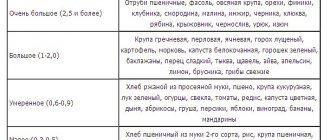Over time, functional training is increasingly included in the standard list of services offered by fitness clubs. Since supply and demand for services are always closely connected, there are also more people wanting to engage in functional training over time. The growing interest in this type of physical activity is due, among other things, to its relative novelty. More and more people want to first of all find out what it is, what it is for, and what types of functional training there are, in order to understand for themselves whether it is interesting to them or not.
Introduction
Functional training is a type of training process that aims to comprehensively develop motor activity by improving the five physical qualities of a person: strength, flexibility, speed, coordination and endurance. An important nuance at the beginning of the training process is your level of physical development and health status. It is in order to determine the current state of these two parameters that it is strongly recommended that you consult a doctor before you begin functional training. This is important to understand, since the stress that you place on an unprepared body very often leads to negative health consequences.
Functional training came to the mass fitness market from specific training programs for athletes in completely different sports. This is a unique set of movements and exercises that athletes, cyclists, skiers, swimmers, kayakers, speed skaters and other representatives of both team and individual sports use in their daily training practice. The purpose of functional training is, among other things, to develop and improve the vestibular apparatus, proper breathing, sense of balance, explosive strength, starting push, finishing push and more. The huge variety of exercises and unusual loads have made functional training something completely new on the fitness services market, which is why it has become widely popular and in high demand among fans of a healthy lifestyle.
Benefits of Functional Fitness
Having purchased a fitness membership, you should give preference to functional training. Even in ancient times, athletes tried not to develop the muscles that were needed for a particular sport, but to bring the entire body into ideal condition.
In practice, it has been proven that training using this method can lead to impressive results. A comparison between conventional and functional training showed that the second method is more effective. All physical qualities develop evenly. In addition, there is a decrease in the risk of sports injuries, and active burning of adipose tissue occurs.
Characteristics
No matter how specific the system of functional training may be in relation to certain sports, its very essence comes down to practicing the movements necessary for a person in everyday life or in extreme conditions. This could be lifting weights at home or at work, stepping over obstacles, holding a child, climbing a stepladder, jumping off a high platform and so on, the list can be endless. The main thing here is that thanks to functional training, the muscle corset is strengthened and stabilizer muscles are developed.
A characteristic feature of functional training is the use of free weights, expanders, bollards, jump ropes, balls, platforms and other equipment, which allows you to perform movements not along a fixed trajectory at a given amplitude, as in weight-block simulators, but in free movement, since most of the exercises are performed with your own body weight. This allows your muscles to reproduce movements as naturally as possible, as they usually do in everyday life. The high effectiveness of functional training lies in the fact that it involves almost all the muscles of your body, including the deep ones, those responsible for stabilization, balance and smooth movements. As mentioned above, this type of training makes it possible to improve the five main parameters of your body - strength, flexibility, speed, coordination and endurance.
Features of functional fitness
The main feature of the training is the exercises: the basic movements performed by a person in the course of life are taken as a basis. It is this method of training that allows you to develop those muscle groups that are most in demand in everyday life. For example, climbing stairs, rising from a chair, etc.
This training is based on the development of the so-called stabilizer muscles. These muscles play a vital role, but they are located too deep, so they are difficult to strengthen. These muscle groups are not controlled by consciousness, but functional training develops them. During training, various equipment is used: platforms, rollers, shock absorbers, balls.
The risk of injury when performing exercises is minimized. The joints of the legs and arms, as well as the spine, do not receive heavy loads, and excessive muscle tension does not occur. Effective and safe functional fitness provides:
- optimal breathing rhythm, removal of carbon dioxide from the body, saturation of organs with oxygen;
- each exercise uses several muscle groups at once;
- the load increases as the body develops (beginners receive less load);
- At the end, stretching exercises are required to ensure proper rest.
Each session consists of strength exercises and aerobic exercise. At first the ratio between them is 70/30%. Gradually the body gets used to it, so it is important to prevent complete adaptation. The ratio of strength training and aerobic exercise, as well as the complexity of the training, constantly varies.
Personal requirements
A positive feature of functional training can be considered the minimization of axial load on the spine and the absence of excessive stress on ligaments and joints. Both the first and second factors make the functional type of training less traumatic than classic training with weights in the gym. However, during training you must adhere to certain criteria, compliance with which will allow your training to become more effective and achieve results as quickly as possible.
Criterion No. 1. Opportunity assessment. You must approach the training process with a cool head and sober calculations. Never use professional training programs at the very beginning of your journey. The load should increase gradually as your level of training increases.
Criterion No. 2. Load alternation. Aerobic and anaerobic exercise must be constantly alternated. More precisely, they need to be used in the correct ratio. In any type of physical activity, the main thing is not to let the body get used to the monotonous load. It needs to be varied all the time.
Criterion No. 3. Correct breathing. The body consumes more oxygen during exercise than at rest. For this reason, it is necessary to monitor its correct circulation and work out the cycles, duration and frequency of inhalation and exhalation for each exercise together with a trainer.
Criterion No. 4. Recovery period. This factor is one of the key ones. It is impossible to achieve increased results if you only load the body without giving it the opportunity to recover. Stretch before and after your workout, eat healthy, and get good sleep.
Functional training
The simultaneous and even distribution of the load on the upper, lower limbs and body allows you to work out the entire muscle structure as efficiently as possible, raising and adapting your level of physical fitness to different environmental conditions. Thanks to the system of functional training, it is possible to achieve full and harmonious progress in the development of the entire morphofunctional system of the human body. Functional training is based on several principles that make it an independent area and distinguish it from many other types of physical activity. These are the principles:
Principle No. 1. High temp. The training should be intense and short-lived;
Principle No. 2. Free weights. It is advisable to use non-stationary equipment in training.
Principle No. 3. Basic exercises. Predominantly multi-joint movements are performed;
Principle No. 4. Honing movements. The emphasis is not on muscle growth, but on coordination and technique.
Functional exercises
Functional training includes a great variety of movements, exercises, their combinations and execution options. This is due to the fact that each individual sport from which the exercises were removed provides a fairly extensive arsenal of general physical training. However, a certain core of exercises is always taken as a basis, which in the basic variation of execution is suitable for all levels of training. This core is divided into four categories of exercises:
Category No. 1. Exercises with weights. These include: squats with a barbell, deadlifts, snatch and jerk of the barbell, swings with a kettlebell.
Category No. 2. Bodyweight exercises. These include: squats, lumbar extensions, jumping jacks, push-ups, lunges, burpees.
Category No. 3. Exercises with special equipment. These include: dips, pull-ups, and rope climbing.
Category No. 4. Exercises to overcome the distance. These include: steeplechase, long-distance cross-running, rowing on a special machine.
Basic exercises for a beginner
Functional fitness includes many exercises (with equipment, weights, body weight). For a beginner, training consists of a five-day cycle.
- The first workout begins with a warm-up, which also includes push-ups, squats, and pull-ups.
- The second workout is devoted to lunges and push-ups.
- The third day is devoted to joint gymnastics.
- On the fourth day the body rests,
- And on the fifth day, work with dumbbells is carried out.
Each session ends with stretching.
The trainer will tell you about all the features of the classes, the number of repetitions, rest time between approaches. Therefore, functional fitness classes should only be carried out under the supervision of a specialist. If regular sports seem boring to you, you can try bungee fitness.
Adaptive divergences
Often, the specific training of athletes in specific sports is confused with functional training. Why is there such confusion? It arises due to a misunderstanding of the fact that elements of athletes’ specific training often do not transfer into functional training in their original form. They adapt to the conditions of the fitness industry for a wide range of users with completely different levels of physical development. This can be described in detail as follows.
Specific training of athletes for a particular sport implies the reproduction of a specific vector of effort required to apply it in competitive conditions. The training process is based on exercises, the task of which is to duplicate the kinetic chains that are part of specific motor functions (the number of working joints, muscle groups involved, points of application of force, and more). At the same time, functional training does not aim to focus on individual physiological and biomechanical parameters, which is necessary for specific sports disciplines, but is used as a way to train and develop the functional abilities of the human body as a whole. In other words, when we talk about specific training for professional athletes, we emphasize the biomechanical and physiological aspects of training, and when we talk about functional training, our goal is to routinely use exercises with characteristics corresponding to exercises from the training arsenal of professional athletes.
What sports qualities does functional training develop?
Bodyweight exercises improve strength:
- muscles become more developed, resilient and strong;
- different muscle groups work more harmoniously and economically, efficiency of movements is achieved;
- Stabilizing muscles are well developed and trained, as a result the musculoskeletal system is better protected from injury.
During training, speed and reaction indicators improve. The movements are performed using a high-speed, “explosive” technique. The heart, blood vessels, and respiratory system become resilient. Their safety margin and adaptive capabilities increase.
The “circular” or interval method has a positive effect on the body’s endurance and makes it easier to cope with any load. Favorable changes are also manifested in flexibility - joints and muscles become more elastic, and overall healthy mobility and mobility are achieved.
As a result of training, the athlete feels his own body perfectly, and his movements become coordinated. Balance appears, balance appears, posture improves.
Afterword
A 2009 study compared the effects of functional training and classical strength training in the gym. The results of this study showed that the effectiveness of functional training in some indicators was higher than that of strength training. Comparing data from two control groups of athletes, the strength gains of the functional training group were 58% greater than those of the gym group. The first group also showed a 196% increase in coordination abilities and a 30% decrease in joint pain. Thanks in part to the results of this study, functional training has proven itself to be an excellent way to rehabilitate patients with various musculoskeletal disorders.
Benefits and contraindications
Benefit
- Correction of posture.
- Improving the functioning of the heart and blood vessels.
- Relief of headaches.
- Development of balance.
- Improving the functioning of the lungs and respiratory system.
- Ease of performing unusual and multi-joint actions.
Contraindications
- Diseases of the cardiovascular or respiratory systems.
- Blood pressure problems.
- Serious diseases of the spine.
- Prolapse of the kidneys (restrictions on jumping exercises).
If you have any of these symptoms, you should consult your doctor before starting exercise.
Recommended for:
Functional training is suitable for girls and boys, women and men - in a word, they will be useful for everyone, regardless of gender and age. But there are categories of people for whom such loads are especially recommended.
You should enroll in the program if you:
- A young mother who wants to regain her figure after childbirth.
- Just started getting into fitness and want to prepare for more serious loads.
- You lead a sedentary lifestyle, for example, work in an office.
- Functional training will help you regain muscle tone, restore good posture and strengthen your body.
- You often do heavy physical labor. Exercising will help you avoid various health problems, including those related to muscle imbalance.
- Recovering from injury or illness. This way you can restore mobility to your body and gain strength.
